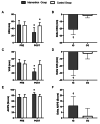Home-based exercise program and Health education in patients with patellofemoral pain: a randomized controlled trial
- PMID: 37980477
- PMCID: PMC10657019
- DOI: 10.1186/s12891-023-07027-z
Home-based exercise program and Health education in patients with patellofemoral pain: a randomized controlled trial
Abstract
Background: Patellofemoral pain (PFP) is one of the most common disorders of the knee joint. Home-based exercise is an effective intervention to achieve self-management for chronic diseases. This study evaluated the effects of home-based exercise and health education in patients with PFP.
Methods: Patients who had PFP were randomly allocated to an intervention group (IG) or control group (CG). Patients in the IG received a 6-week tailored home-based exercise program with health education via remote support, while patients in the CG group only received health education. Clinical outcomes were compared using the Anterior Knee Pain Scale (AKPS) to measure function and the Visual Analog Scale (VAS) to measure "worst pain" and "pain with daily activity". Muscle strength was measured according to the peak torque of the knee muscles using an isokinetic system.
Results: Among a total of 112 participants screened for eligibility, 38 were randomized and analyzed, including 19 participants in the intervention group and 19 participants in the control group. There were no significant differences in baseline characteristics between the groups. At 6-week follow-up, the intervention group showed a greater worst pain reduction (between-group difference, -19.3 [95%CI, -23.2 to -15.5]; P < 0.01) and pain with daily activity (between-group difference, -22.9 [95%CI, -28.3 to -17.4]; P < 0.01) than the control group. Similarly, the intervention group had better improvements in AKPS (between-group difference, 9.0 [95%CI, 4.1 to 13.9]; P < 0.01) and knee extensor strength (between-group difference, 20.1 [95%CI, 14.5 to 25.8]; P < 0.01), compared to the control group. No adverse events were reported.
Conclusion: Home-based exercise and health education resulted in less pain, better function, and higher knee muscle strength compared with no exercise in patients with PFP. A large randomized controlled trial with long-term follow-up is required to confirm these findings.
Trial registration: Chinese Clinical Trial Registry, ChiCTR2200056224 ( https://www.chictr.org.cn/showproj.aspx?proj=135506 ). Registered on February 1, 2022.
Keywords: Anterior knee pain; Health education; Home-based exercise; Patellofemoral pain; Rehabilitation.
© 2023. The Author(s).
Conflict of interest statement
All authors declare that they have no conflict of interest relevant to the content of this study.
Figures


References
-
- Collins NJ, Barton CJ, van Middelkoop M, Callaghan MJ, Rathleff MS, Vicenzino BT, Davis IS, Powers CM, Macri EM, Hart HF, et al. 2018 Consensus statement on exercise therapy and physical interventions (orthoses, taping and manual therapy) to treat patellofemoral pain: recommendations from the 5th International Patellofemoral Pain Research Retreat, Gold Coast, Australia, 2017. Br J Sports Med. 2018;52(18):1170–8. doi: 10.1136/bjsports-2018-099397. - DOI - PubMed
Publication types
MeSH terms
Grants and funding
- 2015SZ0055/Sichuan Province Science and Technology Agency Application Technology Research and Development Project
- 2015SZ0055/Sichuan Province Science and Technology Agency Application Technology Research and Development Project
- 2015SZ0055/Sichuan Province Science and Technology Agency Application Technology Research and Development Project
- CGY2021-602/Sichuan Province Leader Care Scientific Research Projects
- CGY2021-602/Sichuan Province Leader Care Scientific Research Projects
LinkOut - more resources
Full Text Sources

